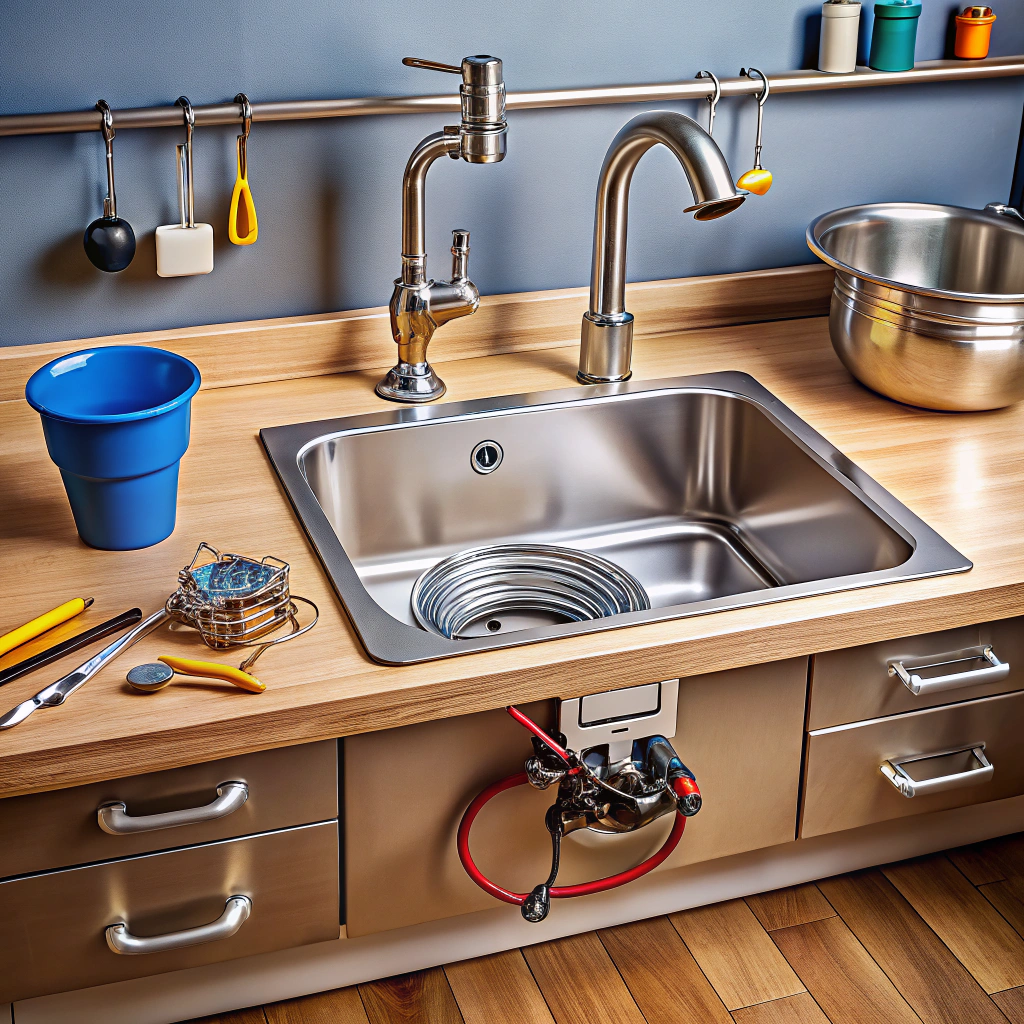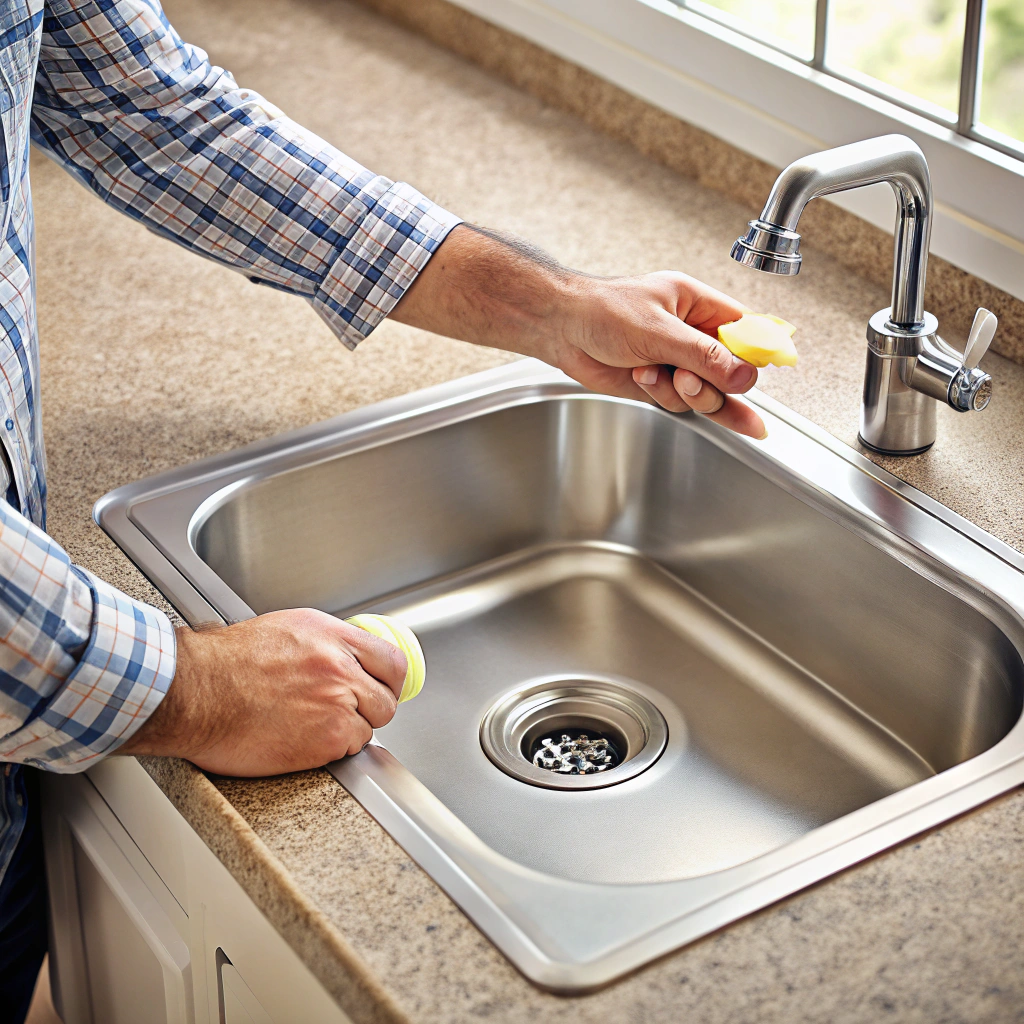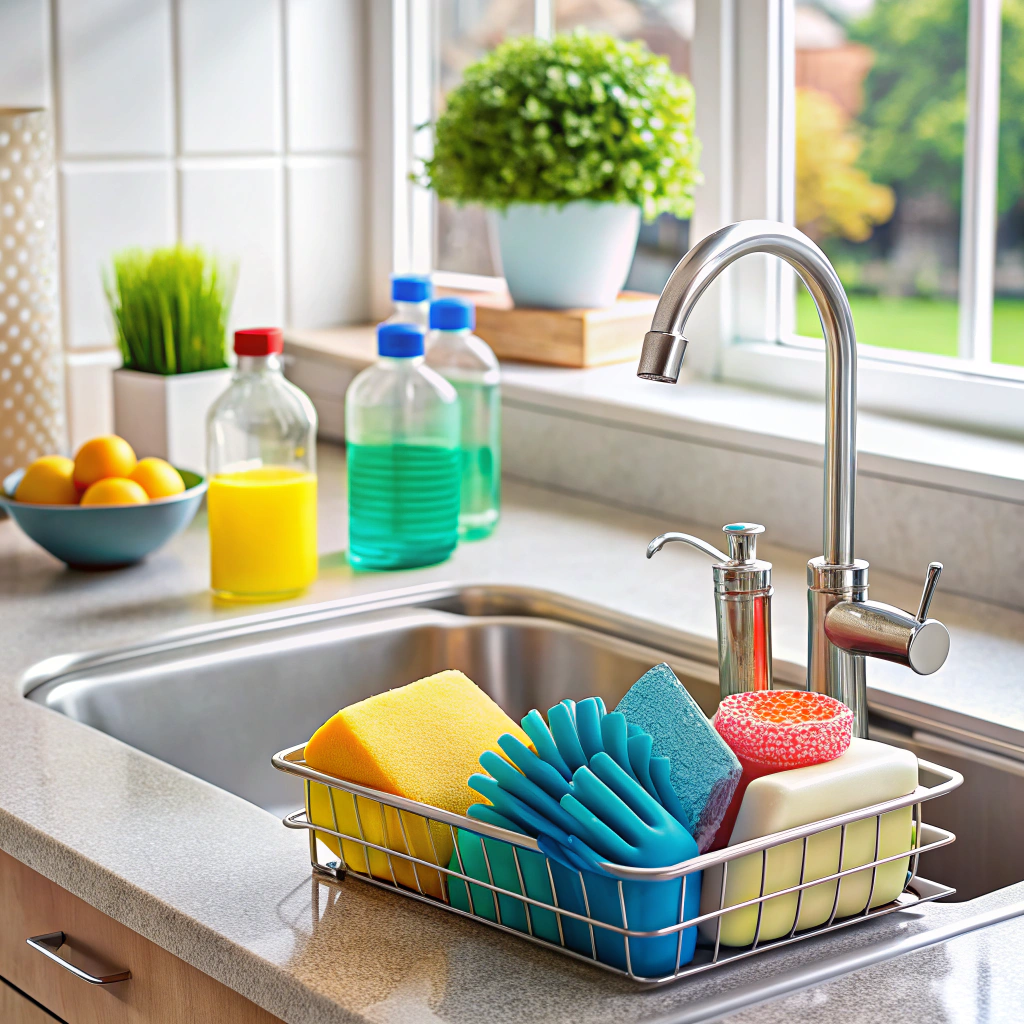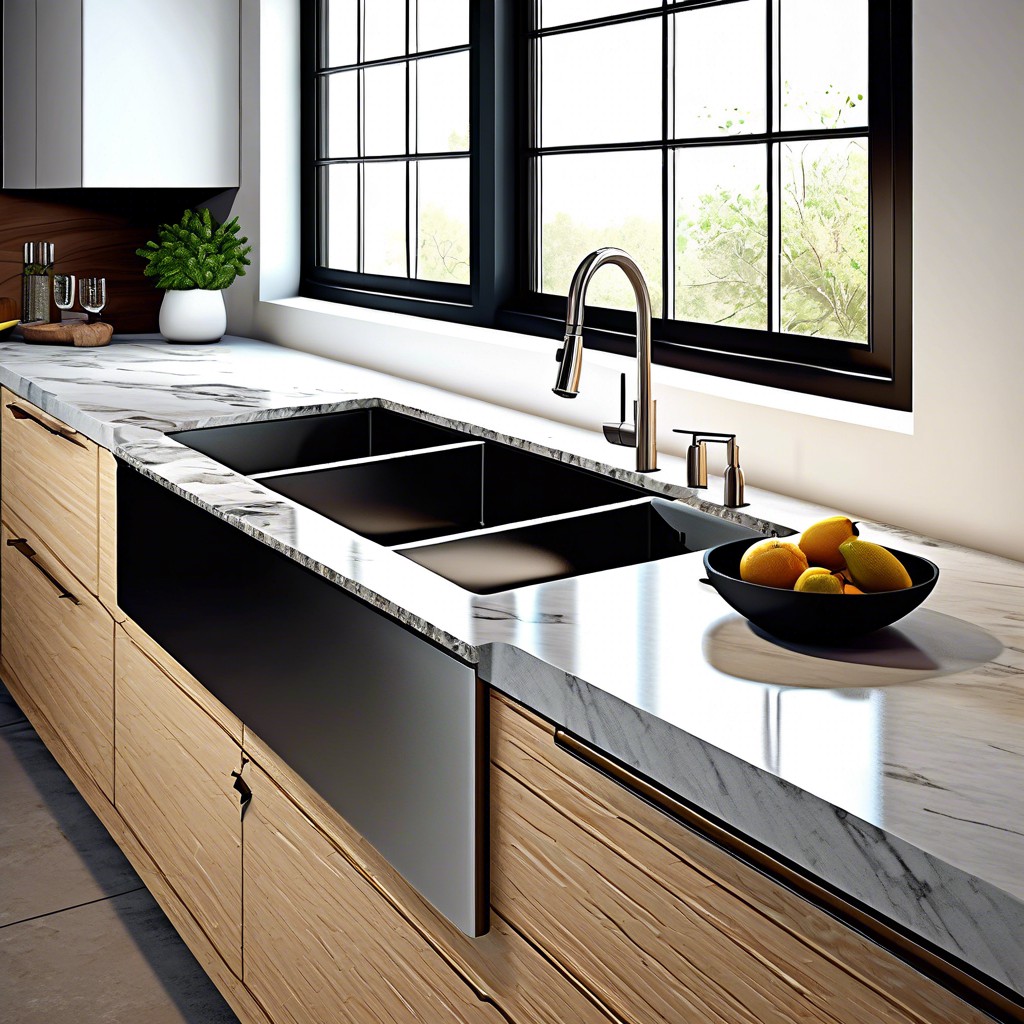Last updated on
In this how-to guide, you’ll learn the steps to install a kitchen sink like a pro without needing to call a plumber.
Looking to tackle that kitchen sink installation and transform your kitchen into a space that even Gordon Ramsay would approve of? You’re in the right place! From gathering tools to expertly sealing those perpetually leaky pipes, we’ll guide you through every knuckle-busting, rewarding step. Yes, that means taking out the old beast too. So grab your toolbox (and maybe a snack for motivation); it’s time to nail this project once and for all!
Key takeaways:
- Gather tools and materials before starting.
- Turn off water supply and clear cabinet space.
- Measure and mark sink layout accurately.
- Connect faucet and drain components properly.
- Test for leaks and make necessary adjustments.
What's Inside
Tools and Materials Needed
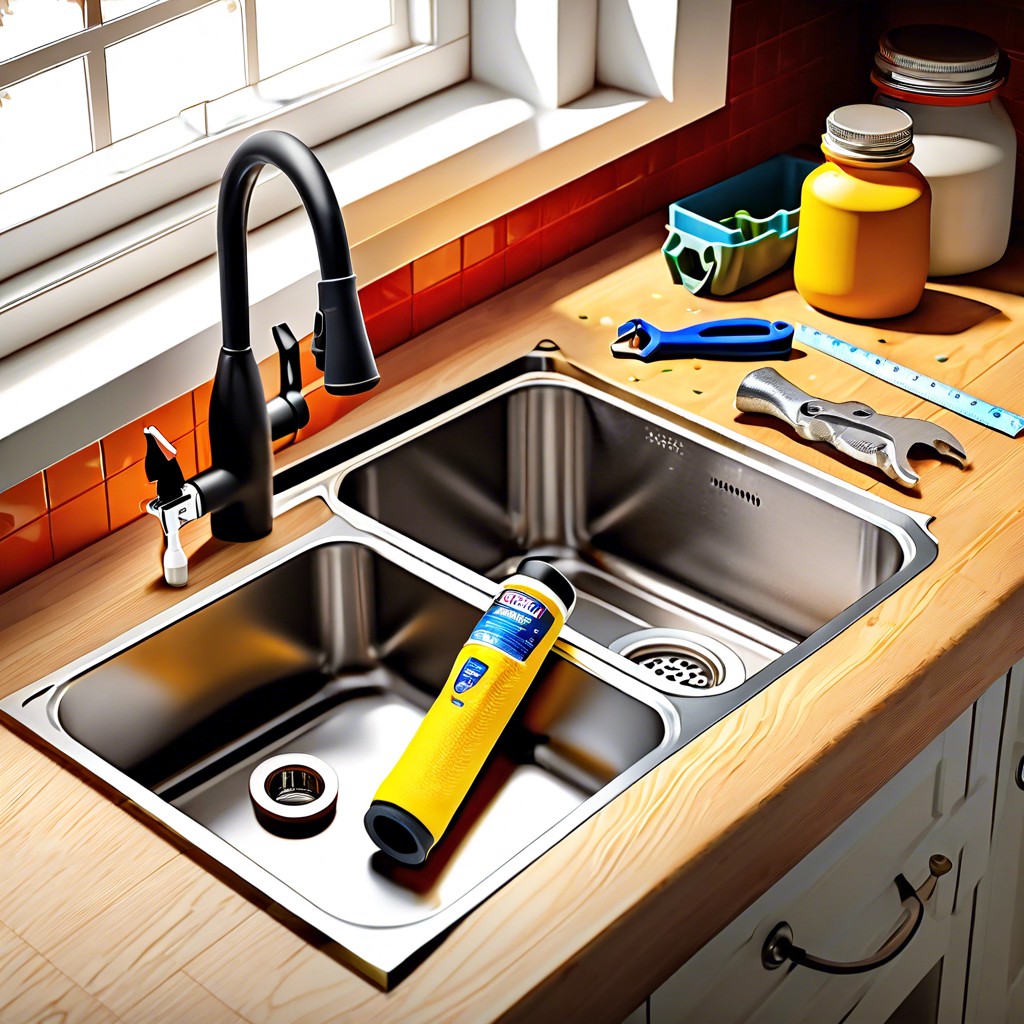
Get ready to unleash your inner handyman. Or handywoman. Who am I to judge? Here’s your trusty toolbox checklist for kitchen sink installation:
First, you’ll need a jigsaw. A little power tool with a big bite, perfect for cutting sink-sized holes in your countertop, not just scary jack-o’-lantern faces. Also, grab a tape measure. It’s crucial for avoiding the dreaded “Oops, I need a bigger sink” moment or making your countertop look like Swiss cheese.
You’ll need plumber’s putty, which is as fun to play with as it sounds. Not to mention, it creates a watertight seal, which is kind of important when dealing with, you know, water.
Wrenches play a starring role, starring alongside their sidekick, the bucket. They’re a dynamic duo with wrenches doing the turning and the bucket catching any water that decides it wants to live outside the pipes.
For some backup muscle, get yourself some pipe joint compound and Teflon tape. These guys help tighten up connections so that your kitchen doesn’t unintentionally turn into the set of Waterworld.
Last but not least, don’t forget the new sink and faucet. Obviously. Attempting a sink installation without them would be like baking a cake without batter. Not as tasty and a little weird.
With these trusty companions, you’ll be well-prepared to embark on your next DIY adventure. Or misadventure. But that’s half the fun, right?
Prepare for the Installation
Start by turning off the water supply. This prevents unintended indoor showers, which aren’t as refreshing as they sound. Clear the cabinet below the sink. Trust me, you don’t want to discover hidden moldy sponges amid the chaos of plumbing work.
Gather all necessary supplies, from wrenches that make you feel like a secret agent to buckets that catch stray dribbles. You’re basically assembling your superhero toolkit here. Ensure you’ve picked the right-sized sink for your countertop. Picture trying to fit an elephant into a clown car; properly measuring ensures the sink fits the opening with grace.
Don’t forget safety gear. Goggles and gloves might not scream fashion, but they do prevent accidental throbbing thumbs and splash battles lost. Have an old towel handy too. Not for installing—a stress reliever when things don’t fit the first time! Prep right, and you’re on your way to kitchen stardom.
Disconnect and Remove the Old Sink
Time to bid the old sink farewell! First things first: turn off the water supply. A wet kitchen might be an exotic experience, but perhaps not the one you’re looking for here. Once that’s sorted, grab a bucket because, let’s face it, you’ll still encounter a splash or two.
Now, unscrew the pipes from the sink. You might require a wrench, and maybe a convincing pep talk for those stubborn bolts. Next up, the faucet. Depending on how your sink is plumbed, you might also need to detach it by reaching under the sink like a circus contortionist.
Once all connections are free, gently lift the old sink out from its resting place. Give it a heartfelt goodbye or a less-than-gentle shove out the door. It served well, but a new era is dawning. With the sink gone, seize the chance to clean the countertop and inspect for any issues before moving on to the next step. Ready for some countertop surgery? Of course you are.
Measure and Mark the Sink Layout
Grab that measuring tape. Precision now will mean fewer headaches later.
Make sure to measure the new sink. Now measure again. That way, it actually fits in that countertop space you lovingly picked out 25 years ago and refuse to let go of. Next, center it. No one wants a sink that looks like it’s trying to escape the kitchen party.
Outline the sink’s shape on cardboard (thank that Amazon box that just arrived) and use it as a template. This step saves the countertop from untimely death by saw.
Don’t forget to factor in the space for faucets and plumbing. Overlooking this step is like finding out your movie snack budget only covers broccoli. Nobody wants that.
And finally, plot the edges with a pencil. Pencils are forgiving; your countertop is not. Adjust the layout to avoid those awkward cookouts where everyone admires your sink’s unique ability to hang half out of the counter.
Cut the Sink Opening With a Jigsaw
Measure twice, cut once! Grab your measuring tape and don’t channel your inner Picasso—precision counts! Verify the sink’s dimensions against your workspace before you cut.
Mark your cutting lines on the countertop with a pencil, ensuring they’re straighter than a baking sheet right out of the oven. Use masking tape along the lines if you want crisp edges and fewer splinters.
Destroying your countertop isn’t on today’s agenda, so drill starter holes at the corners of your markings. It’s where your jigsaw will dive in like a synchronized swimmer, making the cut smoother.
As you use the jigsaw, take your time. Slow and steady wins the race and saves the countertop. Follow the marked lines closely, and don’t let the jigsaw stray like a toddler in a candy store.
A little tip: keep a vacuum handy. Sawdust has a way of spreading like gossip at a dinner party. Happy sawing!
Install the Faucet and Sink Components
Imagine you’re assembling a puzzle, but instead of a pretty picture, you’re rewarded with running water. Start by attaching the faucet to the sink. Before fastening anything, check for proper alignment; nobody wants a faucet that greets you with an odd angle in the morning.
Secure the mounting nuts underneath the sink basin. They’re the unsung heroes keeping your faucet in place. Use a basin wrench for those hard-to-reach spots—like trying to eat spaghetti with a slotted spoon, it can get messy without the right tool.
Install any additional components like a sprayer or soap dispenser. Remember, these little extras are there to make life easier, not to serve as decorative pieces living rent-free on your counter.
Before moving on, double-check the seals and washers. They’re critical in preventing leaks, much like an umbrella is critical in rain—unless you like getting drenched. Make sure everything is snug to avoid future puddles. Enjoy assembling your masterpiece.
Secure the Strainer and Drain
Strainer and drain time! Think of this as creating the perfect escape route for your water. No tiny clogs or annoying slow drains on our watch.
First, get your plumber’s putty ready. Use it to make a nice, even line around the edge of the strainer. It’s like adding icing to a cake, but less delicious.
Now, pop that strainer into the sink opening from the top. Make sure it’s snug as a marshmallow in a mug of hot chocolate. Wipe away any excess putty that squishes out. Nobody likes a messy sink!
From below the sink, secure it all with the rubber washer, cardboard washer, and locknut. Tighten it up, but don’t go overboard. You want it secure, not strangled.
Last, attach the tailpiece to the drain. Hand-tighten first, then give it a final tweak with a wrench. It needs to be just tight enough to prevent leaks but not so tight that it warps.
If it doesn’t leak like a sieve, then you’re golden. Time to move on!
Set the Sink and Connect the Water Supply
Lowering this beast into its home can feel a bit like a game of Tetris. Just pray to the fitting gods that it aligns perfectly. Once the sink is set, grab that putty. Seriously, channel your inner kindergarten art class enthusiast as you roll snakes of plumber’s putty under the edges to create a watertight seal.
With the sink all snug, it’s onto the water supply lines. First, make sure those valves are off. Unless you’re looking for an impromptu bathroom. Then, attach the flexible supply lines to the faucet shanks. Think of it as a connecting-the-dots puzzle, only with pipes. Hand-tighten first and use a wrench for those final secure turns.
Remember to whisper sweet nothings to the fittings. It helps—promise. Or maybe that’s just a plumbing rumor. Time now for a fast but important cross-check of connections for snugness. In the kitchen, snug is always better than sorry.
Install the Drain Pipes and Connect the Dishwasher Drain
Time to embrace your inner plumber and tackle those drain pipes.
First, remember that gravity is your best friend here. Arrange the pipes so that water flows away naturally. Sloped pipes save you from becoming besties with your plunger every weekend.
When connecting the pipes, don’t forget Teflon tape. It’s like the duct tape of plumbing: it fixes leaks before they happen. Wrap it around threaded joints for a snug fit.
Adjust the P-trap with precision. It should align perfectly with the existing pipes, because who likes leaks? Not today!
Now for the dishwasher: attach its drain line to the designated dishwasher tailpiece on your sink’s drain. It’s a match made in kitchen heaven. Just make sure there’s a high loop or air gap to prevent backflow, because dishwater in your sink isn’t the new frothy latte.
Take a moment to admire this plumbing masterpiece. Now, back to connecting all those pipes, imagining you’re a maestro conducting a symphony of water flow. No leaks, no blockages, just pure kitchen harmony.
Test for Leaks and Make Adjustments
Turn on the faucet, and let the water run through. This is where you play detective, searching for leaks like they owe you money. Be thorough, yet gentle. Feel around the joints and connections.
Check the strainer and drain connections too. They tend to leak like a bad detective novel character.
If you spot a leak, tighten the connections. But don’t Hulk out here – over-tightening can be just as problematic.
Look under the sink, shining a light on any dark, dripping mysteries. Pipe connections, hoses, they’re all suspects.
Don’t forget the p-trap; it can be sneaky.
Once adjustments are made, do a final test. Who doesn’t love a good victory run with no leaks?

